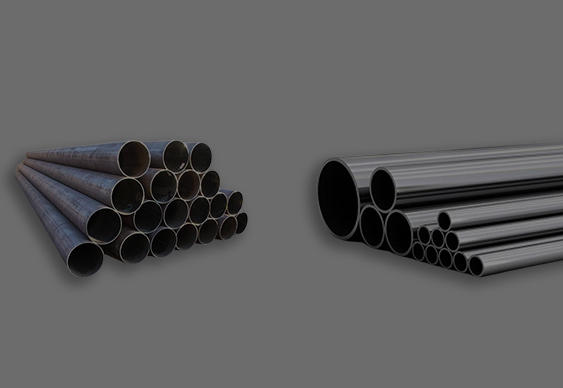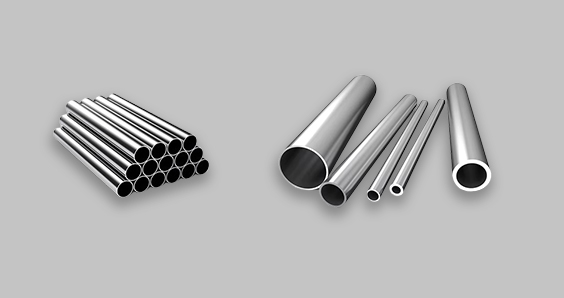
In the huge and vast landscape of steel pipes used in respective industries like oil and gas, water, municipal, chemical, or even food and pharmaceutical industries — there are two well-established and proven variants present — electric resistance welded (ERW) pipes and saw pipes. ERW (Electric Resistance Welded) Pipes & LSAW (Longitudinal submerged arc welded) Pipes both play an important role in infrastructure, but they differ in how they are manufactured, and hence their characteristics and further applications. The Nufit Flanges presents an entire difference among each of these, right here is a high-quality detailed description of them all.
The key difference between ERW Pipes and LSAW Pipes is the method by which the pipes are procured in production. ERW Steel Pipe is manufactured through low or high-frequency resistance Electric Resistance Welding. The process includes rolling the steel in a pipe shape and welding it longitudinally over its length with higher-frequency electric currents. This technique is different because it has an invisible weld seam and can have a pipe size from one-quarter inch to 24 inches.
Whereas LSAW Steel Pipe is produced by using the Longitudinal Submerged Arc Welding technique. Here within this process, the steel plate is normalized to be turned into a pipe and rolled longitudinally with a double-sided submerged arc welding procedure. This method has a diameter spectrum of 16 inches up to 48 inches and more
Electric Resistance Welded Pipe are characterized by their smooth finish, high dimensional accuracy, and ability to be used for small diameters and thin wall thicknesses. Usually, these pipes are made in situations where the pressure needs are not so high, and when the sizes are not so large. Less expensive and has a smaller footprint in the manufacturing process
LSAW Pipes, on the other hand, are renowned for their robustness, providing them with the strength necessary for heavier applications. Its weld seam is of higher quality due to the advanced technology, making it have better pressure and external force resistance. These properties mean they are ideally used for high-pressure applications and large-diameter pipelines
The components have a couple of things the same but on other qualities — e.g., ERW and LSAW — pipes have different applications. ERW Steel Pipe is used for something like oil, natural gas, and water at lower pressures, etc. The above-mentioned pipes are also widely used for engineering and construction works for activities such as scaffolding, fencing, line pipes, etc. In contrast, LSAW Steel Pipe is used more often in oil and gas pipelines for its high-pressure resistance. The line pipe used in the pipelining project is mined for the long transportation of water, oil, and gas, and it is also widely used in structures that can stand the construction of a robust piping solution for utilities and buildings

The cost efficiency of ERW Pipes over LSAW Pipes is based on several factors as a result of the process of creating their production as well as the materials required. ERW Pipes are prepared by welding the seam position of the pipe and therefore it is considered more efficient to manufacture. It is the process of fastening a moving strip or plate to a pipe by high-frequency electric welding. High efficiency and throughput by the continuous nature of the production process further contribute to a lowering of labor costs and manufacturing time
In addition to this, ERW Pipes typically need less steel compared to LSAW Pipes because they can be made with thinner walls as the application allows. Material efficiency is important for reducing direct materials cost; however, the energy used in processing the materials is also reduced and the overall cost-effectiveness is increased. Even with this, which helps the ERW Pipes, they are still perfect for the needs of things as simple as the creation of fences and columns, where the specifications, in terms of pressure ranges, integrity against stress, or other structural situations, are within the limits of the service you need
The ERW Pipes are even more economical when you consider that their production is much simpler and uses much less material. Serving a financially suitable solution without conceding quality and efficiency, these pipes are one of the popular choices for such construction and engineering processes which do not demand the sturdy characteristics of LSAW Pipes
The choice between ERW and LSAW pipes will ultimately be decided by the unique requirements of the given project, including the pressure level of the fluid that will be carried in the pipeline, the desired diameter of the pipes, and the total budget available. Nufit Flanges offers a complete variety of ERW and LSAW pipes as per the specific requirements of whatever your project looks like. So, these all are the differences between the ERW and LSAW pipes, and knowing these differences can make your project much more effective, beneficial, and high-performance. Whether you partake in small-scale construction or are involved in large-scale industrial projects, the right kind of pipe choice is necessary for keeping the projects a success
Contact Nufit Flanges at sales@nufitalloys.com to discuss your ERW and LSAW pipe requirements for your project operations.